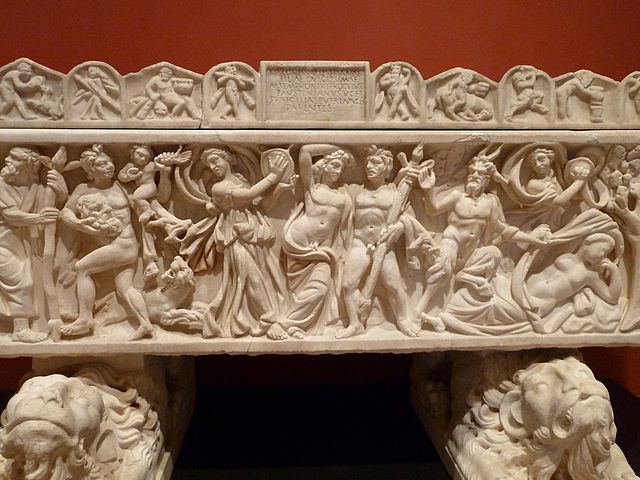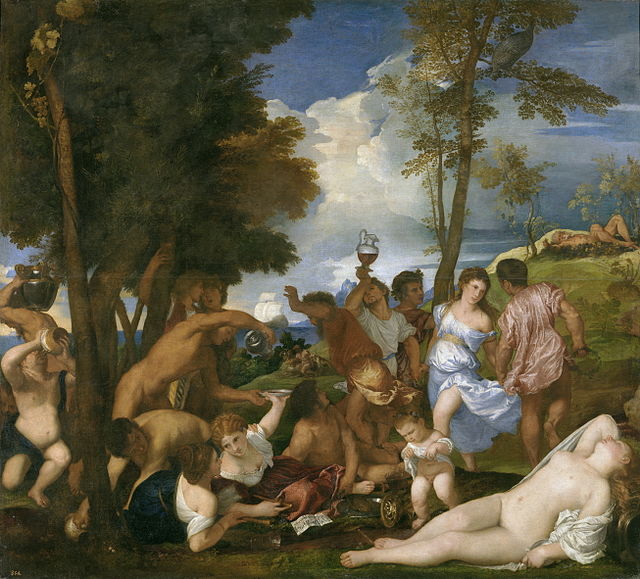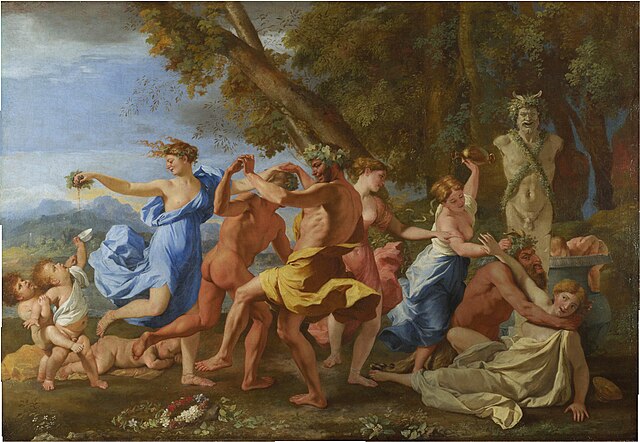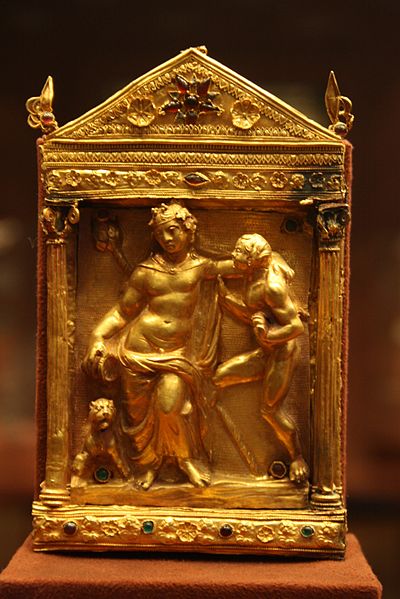The Bacchanalia were unofficial, privately funded popular Roman festivals of Bacchus, based on various ecstatic elements of the Greek Dionysia. They were almost certainly associated with Rome's native cult of Liber, and probably arrived in Rome itself around 200 BC. Like all mystery religions of the ancient world, very little is known of their rites. They seem to have been popular and well-organised throughout the central and southern Italian peninsula.
Bacchanal on a Roman sarcophagus of 210–220 AD
Titian, The Bacchanal of the Andrians, 1523–1526
Peter Paul Rubens, Bacchanalia, 1615
Nicolas Poussin, A Bacchanalian Revel Before a Term of Pan, 1632–1633
In ancient Greek religion and myth, Dionysus is the god of wine-making, orchards and fruit, vegetation, fertility, festivity, insanity, ritual madness, religious ecstasy, and theatre. He was also known as Bacchus by the Greeks for a frenzy he is said to induce called baccheia. As Dionysus Eleutherius, his wine, music, and ecstatic dance free his followers from self-conscious fear and care, and subvert the oppressive restraints of the powerful. His thyrsus, a fennel-stem sceptre, sometimes wound with ivy and dripping with honey, is both a beneficent wand and a weapon used to destroy those who oppose his cult and the freedoms he represents. Those who partake of his mysteries are believed to become possessed and empowered by the god himself.
Second-century Roman statue of Dionysus, after a Hellenistic model (ex-coll. Cardinal Richelieu, Louvre).
Dionysus extending a drinking cup (kantharos) (late sixth century BC)
Dionysus triumph, a mosaic from the House of Poseidon, Zeugma Mosaic Museum.
Golden naiskos with Dionysus, 2nd cent. BC.








